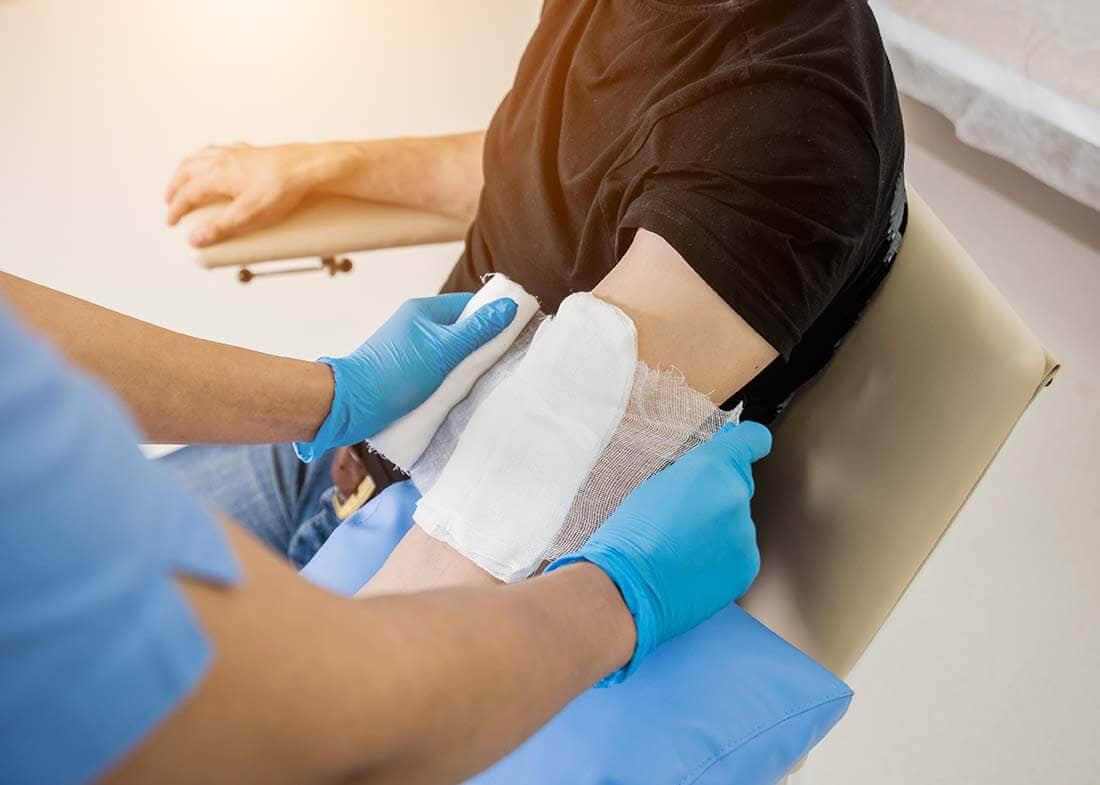Wound Care Panel


Better Treatment for Chronic Wounds
Chronic wounds may be infected with multiple bacteria types and are difficult to treat. PCR testing at Madison Core Laboratories identifies pathogens using PCR technology.
Contact Us
Why Molecular Wound Testing Is Needed
- Traditional lab culture techniques fail to identify many organisms in wound
- Less than 5% of bacteria will grow in a traditional lab culture
- Sample handling has a large effect on quality of results
- Costly to test for aerobic, anaerobic, and fungi
- Chronic wounds are difficult to heal and require specialized treatment
- Chronic wounds are often infected with multiple bacteria
Acute and chronic wounds cause significant clinical sequalae including pain, swelling, failure to heal, expansive tissue damage, and potentially progression to sepsis. Evaluation and determination of the causative pathogens in common wound infections can guide clinicians to appropriate and timely treatment choices for patients presenting with significant lesions. Pathogen identification is most frequently combined with the detection of antibiotic resistance gene determinants in order to best guide initial and subsequent treatment choices. Molecular detection of pathogens most commonly associated with wound infections provides an often-superior method over traditional routine microbiology culture methods since typically only a fraction of present and viable pathogens in a wound will grow in laboratory culture. Molecular (PCR) methods can detect the presence of each pathogen’s respective genetic material and this method provides a very sensitive and specific method to determine which pathogenic organisms are present in wounds.
Wound Pathogen Panel Info Sheet
What Can MCL Molecular Do?
- Molecular identification of wound pathogens is rapid. Report received within 24 hours of sample receipt into the laboratory
- Molecular culture does not rely on the ability of organisms to grow on artificial media. Uses genetic signatures within the organism for identification.
- Diagnostic sensitivity is superior when using molecular diagnostic solution
- Provides comprehensive drug resistance panel to identify key genetic elements that impact treatment
Competitive Advantage
Molecular wound culture has a greater diagnostic sensitivity to traditional culture
Sample handling does not affect the results of a molecular wound culture
Molecular wound culture detects aerobic, anaerobic, and fungi in a single test
Molecular wound culture is faster than traditional culture
Clinical Indications
- Confirm the diagnosis of an infectious disease caused by common bacterial infections
- Help in the differential diagnosis of a pathogen
- Assist in the evaluation of the prognosis of different wound infections
- Provides simultaneous qualitative detection and identification of multiple nucleic acids, accomplished using PCR, of most common wound-associated pathogens directly from specimens obtained from wound swabs.
Wound Pathogen Panel
- Acinetobacter baumannii
- Bacteroides fragilis
- Candida albicans
- Clostridium perfringens
- Corynebacterium striatum
- Enterococcus faecalis
- Enterococcus faecium
- Escherichia coli
- Klebsiella oxytoca
- Klebsiella pneumoniae
- Morganella morganii
- Pseudomonas aeruginosa
- Serratia marcescens
- Staphylococcus aureus
- Staphylococcus epidermidis
- Streptococcus agalactiae
- Streptococcus dysgalactiae
- Streptococcus pyogenes
Antibiotic Resistance
- aaaC4
- ACC
- aphaA6
- Carbapenem Resistance-VIM, (blaVIM-2)
- ErmB
- mefA
- mecA
- GES
- Oxa_1
- Quinolone and Fluoroquniolone
- Resistance QNRA (qnra2)
- Tetreacycline (tetM)
- VanAB (VanA2, VanB)
- Van C1
Also available
- Toenail Fungus Panel
